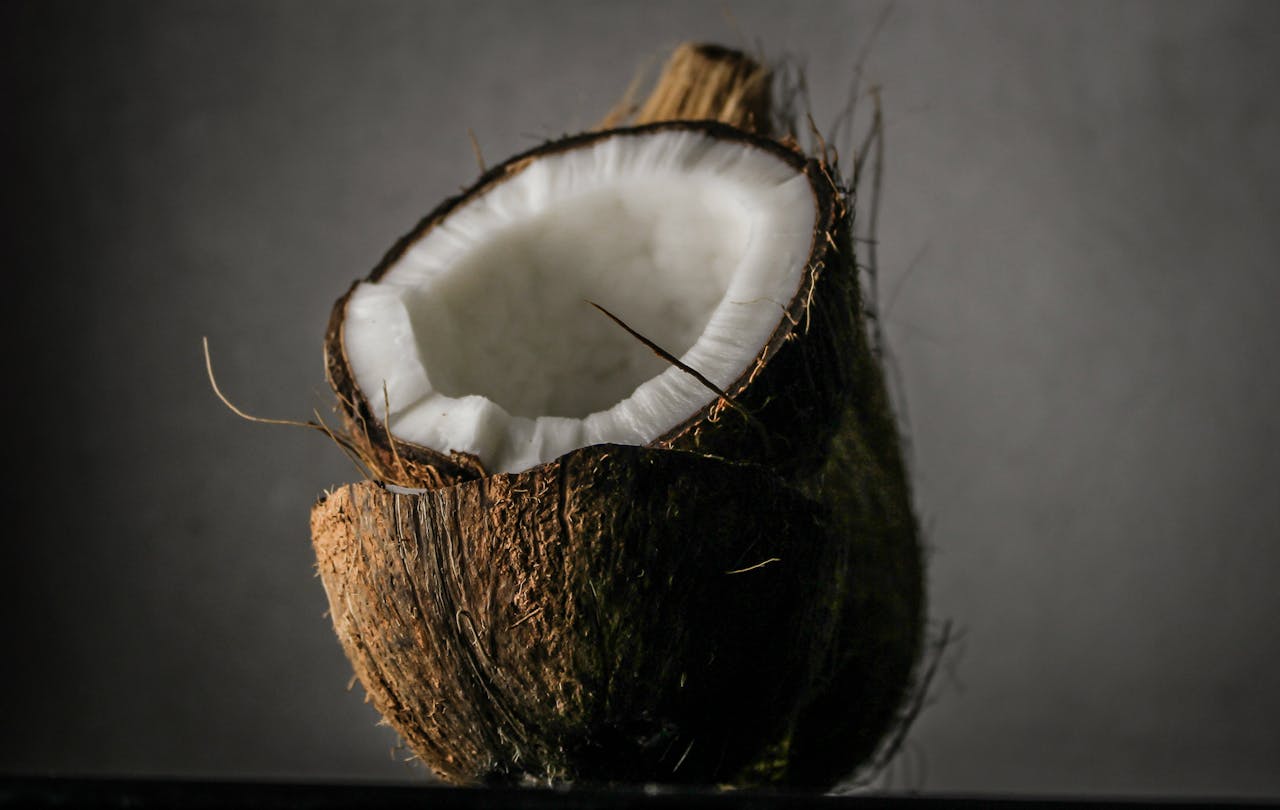If you were stranded on a remote island and had to choose one item for survival, a coconut could make the cut for everything. You could drink coconut water and coconut milk, bathe with coconut soap, make a broom and small shovel out of coconut leaves, and even make do-it-yourself coconut leaf baskets. If you needed a self-defense weapon, that hard shell could certainly slow someone down. And if you need to clean and condition your hair, coconuts can do that plus be used to oil the scalp. The fibrous one-seeded drupe is a fruit, a nut, a seed and one of the most handy items to have in your home. But what’s up with coconuts? And why is it safe for everything from digestion to using coconut oil for scalp care?
What Is a Coconut?
Odoardo Beccari, a palm specialist from the early 20th century, suggests that the coconut is of Old World origin and more than likely came from the Indian Archipelago or Polynesia. Proof of his point, there are way more varieties of coconut palms in the Eastern hemisphere than in the Americas. Because there is no bark, branches nor secondary growth, the coconut palm can’t be accurately described as a tree. A coconut palm is a woody perennial monocotyledon, and the stem is the trunk. Cosmas, a 5th century AD Egyptian traveler and monk, reportedly described a coconut as “the Indian nut” or “nut of India” after taking a trip to India and Ceylon. From Hawaii to Madagascar, coconuts are commonly grown and take up to 12 months to mature.
Why Do Coconuts Work So Well on Hair?
Rich with fatty acids (mainly lauric acid), coconuts can reduce protein loss. By doing so, this strengthens hair and reduces the risk of hair damage (and hair loss). It can also keep hair hydrated and prevent dryness, a major bonus during the winter months and frigid temperatures. If split ends are a problem, regular use of coconut oil on the tips of hair can provide nourishment to stop this from happening. And it also comes in handy to reduce the likelihood of dandruff, itchy scalps and dull hair.
However, similar to shea butter, it has a thick texture that can feel like it’s sitting on the hair more than it is blending into the hair follicles and scalp. When using coconut oil, it’s important to follow the instructions. Simple things like rubbing the coconut oil into the palm of your hands to soften it up at room temperature go a long way, as opposed to just adding a dollop onto the hair and combing it in. It can even be used as a hot oil treatment. However, coconut oil should not be used on wet hair. It will significantly slow down the air drying process. Wait until the hair is dry, and then add coconut oil for scalp treatment.
For an at-home spa day, and because it’s so universal, you can even create your own coconut hair mask while enjoying the hair leave-in treatment or hot oil treatment. Both inside and outside the body, coconut is usually safe.
